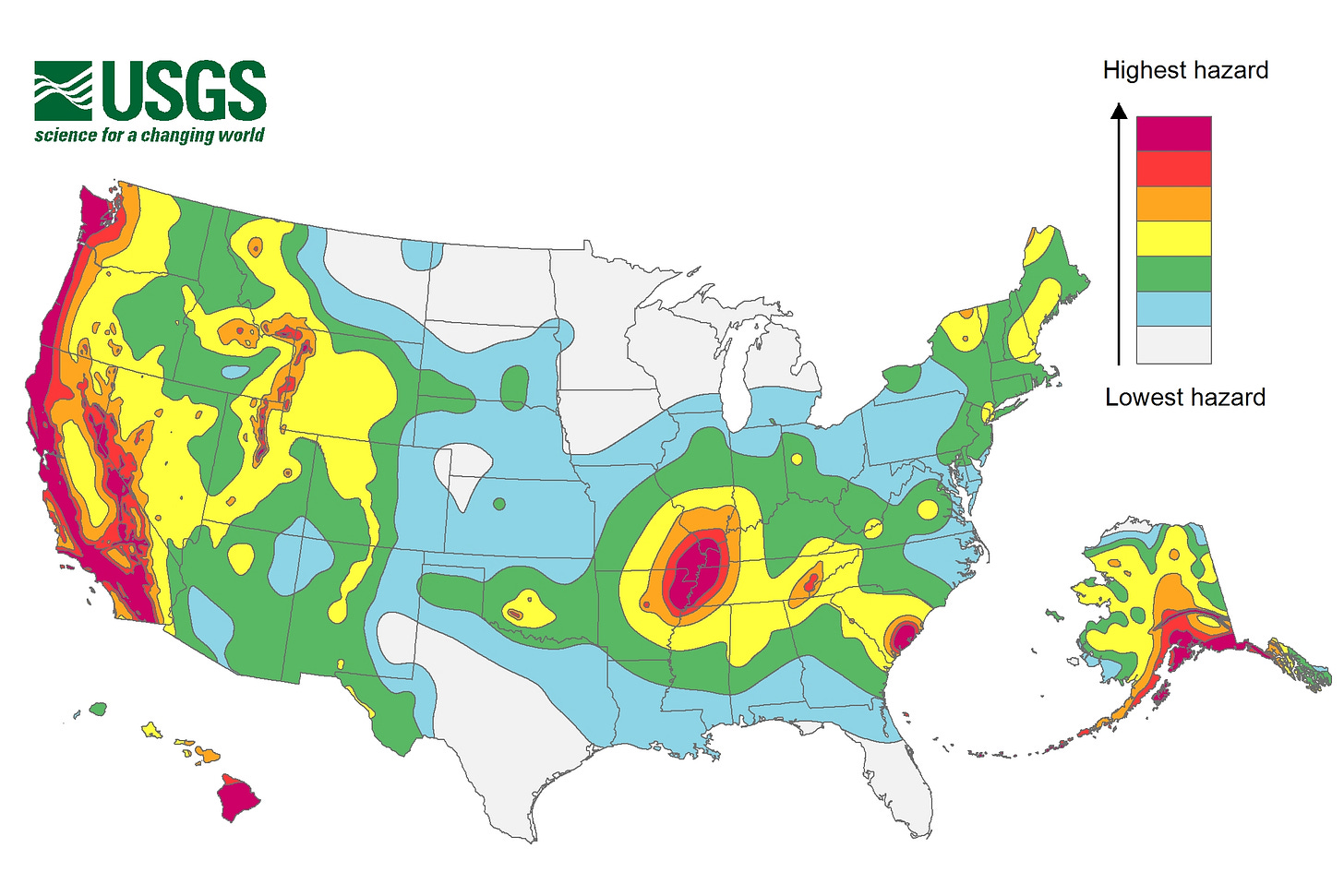If you ask most people about major earthquakes, they will likely assume that they are mostly limited to the west coast of the US, Alaska, Japan, and certain Pacific islands. While this has generally been true in recent history, it isn’t true when zooming out on the world timeline to even just a little over a hundred years ago.
It may be surprising to learn, but just in the time since Europeans have started settling in North America, Boston, MA had an earthquake of magnitude 6 (1755); New Madrid, Missouri had 3 earthquakes in the magnitude range of 7.0 - 7.8 (1811 - 1812); and Charleston, South Carolina suffer an earthquake with a magnitude in the range of 6.8 - 7.2 (1886). When these earthquakes occurred, they destroyed much of the cities near them, including much of Boston and Charleston.1

These eastern earthquakes can be devasting. Alaska dominates the list of largest US earthquakes by magnitude but if we remove it from the list, the New Madrid quakes that happened in Missouri between 1811 and 1812 come in 7th at 7.5–8.0 Mw and caused between 100 and 500 fatalities. The area shook by the New Madrid quake was ~10x larger than that of the 1906 San Fransico quake.2
Most of these earthquakes happened when the populations in the surrounding areas were still relatively small. This is likely why we don’t hear much about them today. This does not mean they are gone. The tectonic plates that power earthquakes can be relatively idle for hundreds of years (or even longer), but there will come a moment when one has to move, and when that time comes, so too will a potentially devasting earthquake. To this point, in 2011 a 5.8 magnitude earthquake struck near Mineral, VA. This quake was felt from as far south as Georgia to as far north as Maine and southeastern Canada. As much as 1/3 of the US population felt the quake. The total economic losses attributed to this quake amount to as much as 300 million USD. It caused the shutdown of the North Anna nuclear power plant, which was 23km northeast of the epicenter. Fortunately, there were no reported fatalities or serious injuries.3
My point in writing this is not to scare you. There isn’t a ton of information out there about earthquakes in the Eastern US, certainly not enough to dedicate a full deep dive to, but I found what I learned interesting and thought it was worth sharing. It also begs the question: how prepared are we and should we do more to prepare?
According to the USGS
Eastern North America has older rocks, some of which formed hundreds of millions of years before those in the West. These older formations have been exposed to extreme pressures and temperatures, making them harder and often denser. Faults in these older rocks have also had more time to heal, which allows seismic waves to cross them more effectively when an earthquake occurs.
This demonstrates an important point: whilst major earthquakes in the eastern US are much rarer than in the west, they are also significantly more devasting on average. This is something people should keep in mind. Perhaps those in eastern hotspots should consider getting proper protections, such as ensuring new buildings are resistant to earthquakes and purchasing earthquake insurance.



